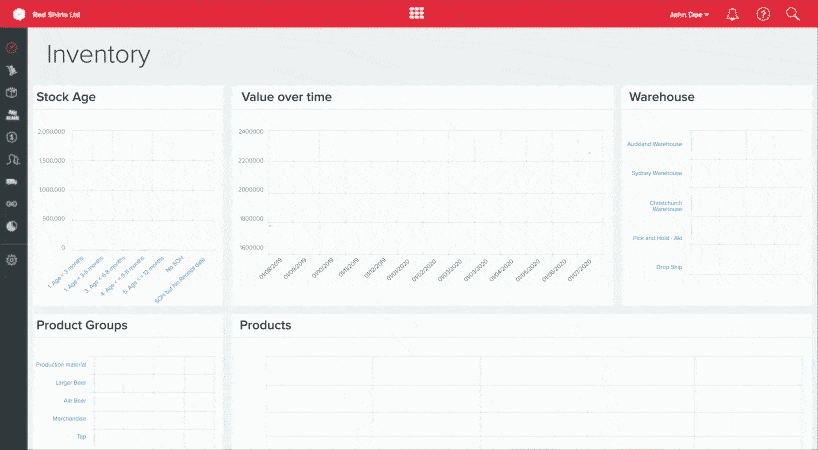
Business reports are valuable and essential tools for any enterprise regardless of size or industry. They provide a means to track and analyse the performance and overall health of the business while identifying areas for improvement and opportunities for growth.
Regular business reporting and monitoring are also necessary for many organisations to keep senior management, board members and other stakeholders advised on what is happening within the organisation.
Learn the purpose and importance of business reporting in this guide, plus the six main types of business reports.
The purpose of business reporting
The aim of a business report is to provide critical analysis of how the business is tracking in all areas of the organisation. Business reports are important tools to guide decision-making and to allow business owners and senior managers the opportunity to investigate and solve any identified issues.
Reporting is done through the process of compiling and reviewing the information within a specific functional area such as finance, sales, operations, inventory control or any area of the business where performance is monitored and measured.
Once information is gathered and reviewed, conclusions can then be drawn, and recommendations made.
The outcome of the report may explain why an issue has occurred or may identify performance problems and generally will recommend a course of action.
 Business reports are especially important in inventory-related businesses, as inaccuracies around stock levels can create serious friction.
Business reports are especially important in inventory-related businesses, as inaccuracies around stock levels can create serious friction.
The importance of business reporting
Business reports provide useful insights for management such as information on spending, profits and growth.
Reports will provide important detail that can be used to help develop future forecasts, marketing plans, guide budget planning and improve decision-making.
Managers also use business reports to track progress and growth, identify trends or any irregularities that may need further investigation. In addition to helping guide important decisions, business reports help to build an audit trail of business activities including reports that document annual budgets, sales, meetings and planning initiatives.
Business reporting promotes transparency and for many public companies, an annual report is a legal requirement to provide shareholders, the government and others with financial data and ownership information about the business.
Additionally, regular reporting throughout the business year enables businesses within the same sector to measure and compare their performances against others.
6 main types of business reports
Different reports will provide distinct value for all functional areas of an organisation. Examples of some common reports include market analysis, trend analysis and financial analysis as well as operational and performance reports.
Inventory reports
Inventory stock records – typically generated with inventory management software – report on the movement of inventory into and out of the warehouse.
They help a business identify any problems affecting performance such as product loss, obsolescence or dead stock.
Market analysis reports
They help business owners decide how to allocate their resources.
For example, when an analysis of the market concludes that the ensuing business year will see accelerated growth, companies can increase their marketing budget to take advantage of this.
Trend analysis reports
These reports support long-term business development by examining statistical trends such as consumer preferences and the demographic groups that are experiencing the quickest growth rate.
The objective of a trend analysis report is to identify growth opportunities to enable businesses to build market share ahead of competitors.
Financial reports
Financial reports are generally prepared on a regular basis by most companies and help to keep them on track toward achieving revenue and profit objectives.
These reports highlight any variances in the financial results compared to forecasts in the annual business plan and will explain the reason for any significant negative variance.
Operational analysis reports
These reports show how efficiently a company is operating and will recommend ways to further improve productivity.
An analysis of inventory control might indicate that the company experiences periodic shortages of key raw materials that prevent timely order fulfilment. The report may recommend that the company look for back-up suppliers of essential items to ensure availability when needed.
Performance reports
Monitoring performance trends help the company to set KPIs, benchmarks and business goals based on the most important aspects of the business.
Performance reporting allows the business to compare performance over different timeframes and report objectives should always align with KPIs to demonstrate if these have been met or even exceeded.
Business reporting for business success
Business reports document the progress of your businesses and the data collected serves several important purposes.
It guides strategic decision making, helping business leaders to formulate budget and planning activities for the ensuing year using the report data to back choices and provide justification for each decision.
Monitoring and reporting over time will not only highlight problems but can also identify opportunities for growth or expansion. Reports also work as a means of recording previous activities and help to define future growth opportunities by identifying already proven successes or what else could be done moving forward.
Inventory reporting
Online inventory control solutions not only help to improve inventory control but provide accurate, real-time insights, generating a variety of inventory reports to support great business reporting.
Inventory reports can be included in the body of, or as appendices to business reports to support conclusions or to validate recommendations. With an automated, online inventory control system you can customise reports to easily identify products by supplier, product, location and variation. Other common inventory reports include:
- On hand inventory stock — a detailed overview of your inventory with a list of all the products and variations that you have in stock, including a list of items that are currently out of stock.
- Inventory Detail Report — in addition to the current stock on hand levels this report also shows the amount of inventory stock committed to sales orders from the available stock.
- Inventory Location Report — this allows you to compare the inventory stock you have across various storage locations.
- Stock Reorder Report — you can manage your stock and backorders with the reorder report. Identify variants that have fallen below par level reorder points and variations with negative stock.
- Incoming Stock Report — these can be filtered by supplier, date range, location and other categories to provide an overview of incoming stock from current purchase orders.
- Historic Inventory Report — you can export your inventory stock levels and moving average cost from any point in history. Historic inventory reports are valuable tools to assist with sales predictions and demand forecasting.
Inventory reporting also helps track inventory turns, cost of goods sold and can reduce the risk of stockouts and overstocking.
 Business reporting holds great value for inventory managers, especially those in the ecommerce, wholesale, retail, and manufacturing sectors.
Business reporting holds great value for inventory managers, especially those in the ecommerce, wholesale, retail, and manufacturing sectors.
Try Unleashed BI Vision reporting tool for free
The basic Business Intelligence module in Unleashed – called BI Foundation – is permanently free for all users. However, we strongly encourage you to test the more sophisticated BI Vision module in a free trial.
BI Vision has been designed to give Unleashed users the kind of powerful analytics insights normally accessible only by those with Enterprise level solutions like Microsoft Power BI or SAS, which can cost in excess of $100,000 per year in licensing fees, and require a full manual data integration.
Unleashed BI Vision, by contrast, is incredibly competitively priced, and uses the live business data already managed by Unleashed’s inventory, sales and production systems.
To get your hands on this Enterprise-level solution, simply switch on your free trial on the Business Intelligence page here – or speak to a consultant to arrange a demo.
This article was updated in July 2023 to reflect current business report trends and new information.
More posts like this
- Stock Management Improvements For Better Performance - Stock management affects a company’s performance in many ways. Too little stock can lead to a reduction in sales and a loss of customers, and too mu...
- Data-driven decision making in beer brewing [expert Q&A] - As brewers ramp up production it’s critical they protect margins with data-driven decision making. Unleashed Software spoke with Maria Pearman, a Ce...
- Alternative Protein: A Food Manufacturers Guide [+ Case Study] - Alternative proteins have seen a rise in popularity over the last decade – a trend expected to continue in future – as consumers look to m...
